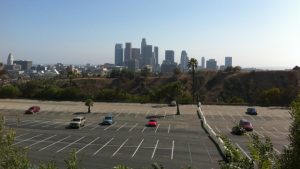 If there’s one local land use policy most to blame for constricting transit-oriented development, killing the walkability of neighborhoods, adding to traffic, and encouraging sprawl, it’s excessive parking requirements.
If there’s one local land use policy most to blame for constricting transit-oriented development, killing the walkability of neighborhoods, adding to traffic, and encouraging sprawl, it’s excessive parking requirements.
How so? High parking requirements add tremendous costs to new developments, which get passed on to renters and home buyers. The extra parking stalls simultaneously limit how big a building most developers can build, which limits the number of units and therefore the available supply to stabilize prices.
High parking requirements also encourage driving, which hurts walkability and adds to the traffic. And they represent a waste of space, dedicating more land to asphalt than houses, stores, and offices, which encourages more development out in sprawl zones.
So why do local governments require so much of it? Simply put: ignorance and fear. Ignorance of how much parking is actually needed (most parking requirements come from boilerplate planning texts with no relationship to actual demand), and fear that there won’t be enough parking if government doesn’t require it.
My dislike for parking requirements is why I’m happy to help promote an upcoming conference at Los Angeles City Hall on parking policy reform options, on Tuesday May 16th. The event is being organized by the nonprofit Council of Infill Builders and Los Angeles City Councilmember Jose Huizar.
Seleta Reynolds, general manager of the L.A. Department of Transportation, will provide the keynote, and a panel of experts will discuss parking reform options for the various cities and county of Los Angeles. Finally, the event will feature the release of the new report “Wasted Spaces” from the Council of Infill Builders with policy recommendations for L.A.
You can see the conference agenda for more details. Register to attend soon, as space is limited in the room atop City Hall.


